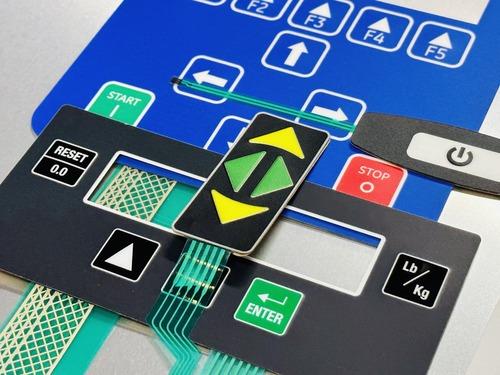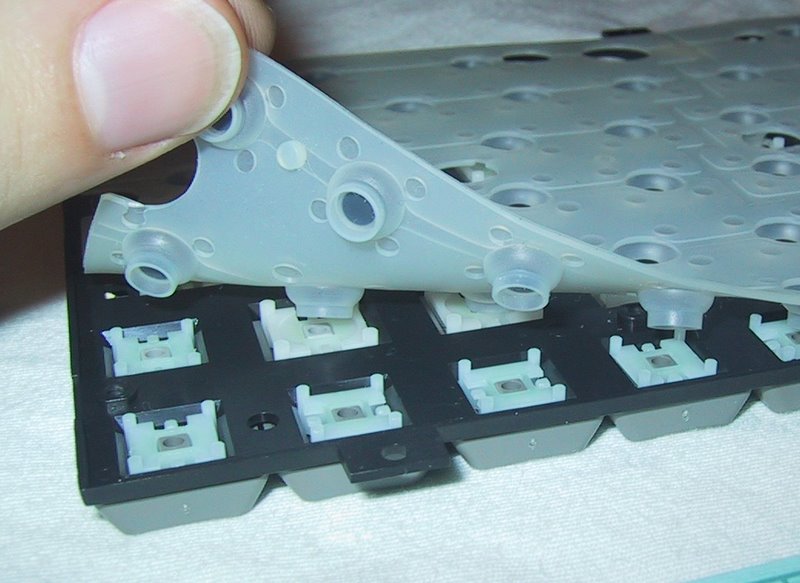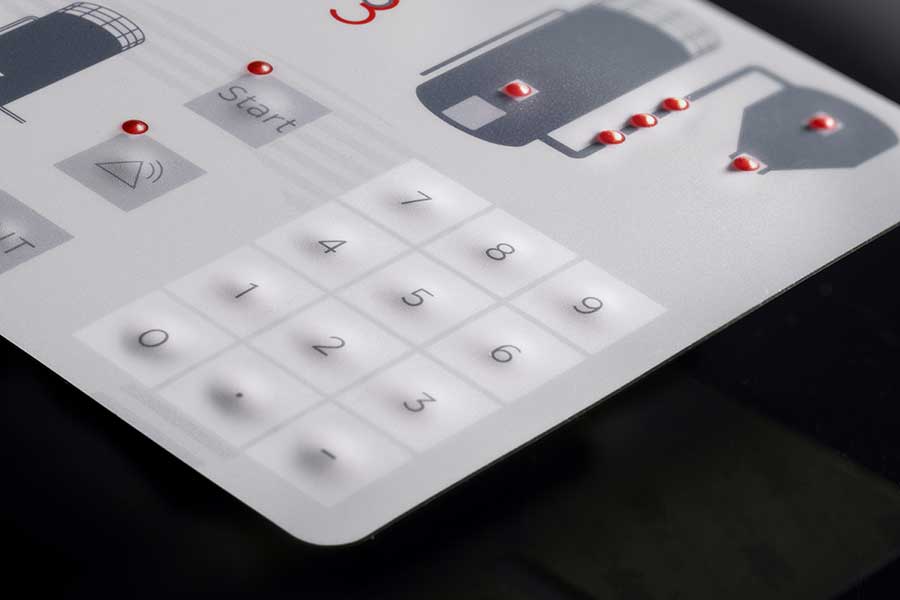A Comprehensive Guide to Membrane Switches for Product Designers
A Comprehensive Guide to Membrane Switches for Product Designers
Blog Article
Understanding the Value of Membrane Switches in Customer User Interfaces
Membrane switches are important elements in the style of reliable individual interfaces, promoting not just performance yet additionally boosting visual charm and user interaction. As we explore the various advantages and future trends associated with Membrane innovation, it comes to be clear that these switches are extra than just parts; they represent a merging of innovation and usefulness.
What Are Membrane Switches?

The spacer layer, which includes adhesive buildings, enables the separation of the circuit layer from the overlay, making certain that the switch continues to be in a non-activated state till pushed. When pressure is put on the overlay, it compresses the spacer layer, bridging the space and completing the circuit in the underlying layer. This design not just lowers the physical area required for traditional mechanical buttons but additionally improves the durability of the gadget, as Membrane switches are generally resistant to dust, dampness, and various other ecological aspects.
Generally located in applications varying from consumer electronic devices to clinical tools, Membrane buttons are important to modern innovation, supplying a straightforward and reliable user interface that straightens with modern layout requirements.
Benefits of Membrane Switches
While numerous button technologies exist, Membrane Switches deal unique advantages that make them specifically desirable in various applications. Among the primary benefits of Membrane switches is their small style, which permits space-saving implementations in tools where actual estate is limited. Their slim profile not only boosts aesthetic allure however also assists in lightweight building.
An additional substantial advantage is their resistance to environmental aspects. Membrane switches are normally secured against dampness, dirt, and pollutants, making them perfect for use popular settings, such as clinical devices and industrial tools. This toughness extends the life expectancy of the switch, minimizing maintenance prices and improving reliability.
Moreover, Membrane buttons can be personalized to fulfill particular layout needs, incorporating special graphics and shades that improve individual interaction. Their tactile comments alternatives can likewise be customized to offer an enjoyable individual experience. Furthermore, Membrane switches are cost-effective, especially in high-volume applications, as they can be produced efficiently.
Applications in Various Industries

In the consumer electronics field, Membrane switches prevail in tools such as microwaves, cleaning machines, and remotes. Their responsive comments and aesthetic options improve customer experience while giving a smooth, modern look. Furthermore, automotive producers utilize Membrane buttons in dashboard controls and infomercial systems, where area is restricted, and customer interaction is crucial.
In addition, the industrial market leverages Membrane buttons in control panels for machinery and devices, allowing for instinctive procedure in often rough atmospheres. Their resistance to chemicals and dampness guarantees durability and dependability in these applications. Overall, the pop over to this web-site versatility of Membrane Switches adds considerably to their widespread usage, making them indispensable in numerous technical domain names.
Style Considerations for Membrane Switches

When designing Membrane buttons, several essential factors to consider have to be taken right into account to ensure optimum performance this link and individual experience. The choice of materials is important; selecting resilient, premium substrates can enhance the switch's long life and resistance to environmental aspects such as moisture and temperature variations.
Secondly, the style of the visuals overlay ought to prioritize clearness and ease of usage. Symbols and message must be clear, and the layout ought to facilitate intuitive interaction (membrane switches). In addition, responsive feedback is vital; including a tactile dome or various other devices can enhance the individual experience by giving physical verification of activation
Another vital variable is the button's electrical performance. Designers should make sure that the conductive traces are correctly designed to minimize resistance and avoid signal disturbance. This involves evaluating the called for actuation pressure and ensuring compatibility with the digital elements they will interface with.

Future Trends in Membrane Modern Technology
As modern technology remains to development, Membrane buttons are positioned to progress substantially, driven by technologies in materials and producing techniques. One arising trend is the unification of sophisticated products, such as conductive inks and adaptable substratums, which boost sturdiness and minimize the overall weight of Membrane buttons. These products not just improve the responsive action yet likewise enable the layout of switches that can stand up to harsher ecological conditions.
Furthermore, the integration of touch-sensitive technologies is transforming typical Membrane Switches right into more interactive interface. Capacitive touch sensors installed within Membrane switch panels can give a more user-friendly and receptive user experience, aligning with the expanding demand for sleek, contemporary designs in consumer electronics.
Furthermore, innovations in printing methods, such as electronic and 3D printing, make it possible for rapid prototyping and modification of Membrane buttons. This flexibility enables makers to respond faster to market demands and consumer preferences.
Finally, sustainability is becoming a substantial focus, with suppliers exploring eco-friendly products and procedures. As these trends unravel, the future of Membrane modern technology promises boosted functionality, visual appeal, and ecological responsibility, solidifying their duty in sophisticated user interfaces throughout different sectors.
Final Thought
In conclusion, Membrane Switches represent a vital element in the design of customer interfaces, incorporating capability with visual versatility. As advancements in modern technology continue, the evolution of Membrane switches is expected to additional refine customer interfaces, driving advancement and boosting usability in a progressively complicated technical landscape.
Membrane buttons are important components in the design of reliable user interfaces, helping with not only performance yet also enhancing visual allure and individual communication.Membrane Switches serve as a crucial element in numerous individual interfaces, assisting in a seamless interaction in between customers and electronic tools.While many button technologies exist, Membrane Switches deal distinct benefits that make them especially preferable in different applications.Moreover, Membrane switches can be customized to meet certain style demands, including distinct graphics and shades that boost user interaction.In verdict, Membrane Switches represent an important element in the layout of customer interfaces, combining performance with aesthetic flexibility.
Report this page